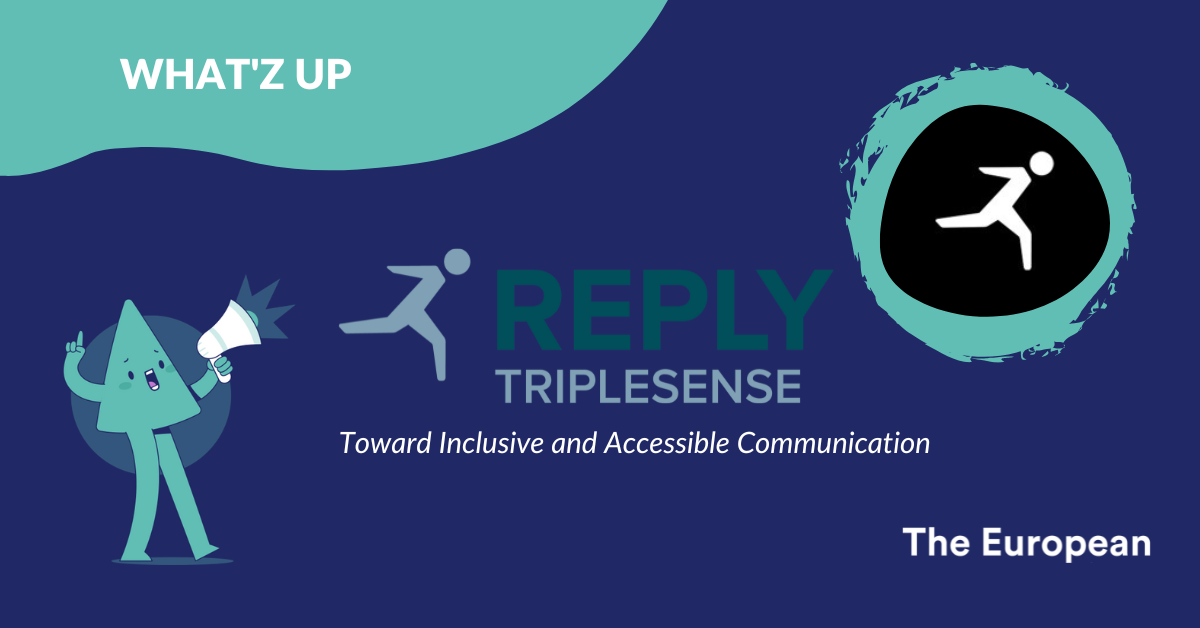
Free Hand | December 2024
Triplesense Reply
Triplesense Reply
Toward inclusive and accessible communication

Inclusivity and accessibility have become central themes in communication today—not only as ethical imperatives but also as strategic levers for organizations and professionals in design, content creation, and development. Communication wields significant influence in shaping perceptions, reference models, and access to information. Thus, those working in the sector bear the responsibility of fostering new narratives that dismantle stereotypes and broaden shared cultural imaginaries.
This white paper delves into the importance of adopting approaches and strategies that embrace diversity and ensure equitable access to information, which is essential in an increasingly interconnected society.
Introduction
In the digital age, people’s expectations of communication have undergone a radical transformation. Communication now means more than disseminating messages—it’s about creating authentic, inclusive, and accessible experiences that generate real and lasting impact.
But what do we mean by “Inclusivity” and “Accessibility”?
The two terms represent distinct yet deeply complementary aspects:
- Inclusivity involves authentically and respectfully representing diverse experiences and identities. It reflects the recognition of individuality and others’ choices.
- Accessibility, in the realm of design and technology, entails creating content, services, and platforms that are easy to use for everyone, regardless of abilities or the technologies they employ. This is governed by regulations outlining indicators and standards to be met.
The Challenge of Representation: Toward a Pluralistic Imaginary
The Current State
According to a 2023 report by CreativeX, only 4% of individuals featured in over 126,000 global advertisements were aged 60 or older. This reveals how older demographics are nearly absent from mainstream cultural narratives, and when represented, they are often portrayed in stereotypical or negative ways. This bias extends to younger generations with foreign backgrounds, the LGBTQIA+ community, and people with disabilities. Non-inclusive representations restrict the audience’s worldview, confining it to standardized and conventional models.
Implications
The challenge is to craft new narratives that honor human diversity, celebrate a plurality of experiences, and adopt inclusive models that allow everyone to see themselves reflected in communication.
The Power of Language: Inclusion Begins with Words
Linguistic Biases
A “Language Bias in Performance Feedback 2024” report highlights that women are seven times more likely than men to internalize negative stereotypes. This bias is evident in language, which historically defaults to male-centered norms. For example, the generic masculine is still widely used, and adopting gender-specific professional titles remains challenging.
Language Evolves with Us
Choosing words thoughtfully is a crucial step in combating discrimination and promoting respectful communication. The potential for meaningful change is both tangible and necessary. Using language more consciously broadens shared cultural horizons, ensuring that everyone feels “seen” and welcomed.
Designing Accessible and Inclusive Experiences
The Current Context
Approximately 15% of the global population lives with some form of disability—whether temporary or permanent (Beyond Accessibility Compliance, Sukriti Chadha). Despite advancements, millions face barriers when interacting with products or services, especially online. Digital barriers severely restrict access to social and professional opportunities, making accessibility an urgent priority.
Strategic Solutions
Creating accessibility involves implementing universal design practices and solutions that are usable regardless of hardware, software, language, or abilities. Tools such as readability testing, multilingual translation, alt-text for images, and responsive design are essential.
Accessible Design
To ensure content is accessible, specific design elements should be integrated early in the process, including:
- High-contrast color schemes to enhance readability.
- Alternative text for images, enabling visually impaired individuals to access information.
- Subtitles and transcripts for audio and video content to assist those with hearing impairments.
- Simplified and structured text layouts, which improve comprehension for individuals with cognitive or learning disabilities.
Conclusions
The Impact on Brands
Creating accessible experiences not only enables everyone to participate fully in social, cultural, and professional life but also broadens potential audience reach. Incorporating accessible practices and inclusive language presents an opportunity to extend the reach of your content and strengthen your brand. This is not a fleeting trend—it’s a foundational element of modern and responsible communication.
Want to Learn More?
In the podcast Fuori Standard, Triplesense Reply offers practical insights and in-depth discussions on accessible design and inclusive language, contributing to a more equitable and inclusive society.
Listen to all episodes and discover how to create communication that embraces and celebrates the richness of human diversity.

Are you tempted by the andzup experience?
Our sales representatives are available to present the andzup solution to you in a few minutes.
© All rights reserved

